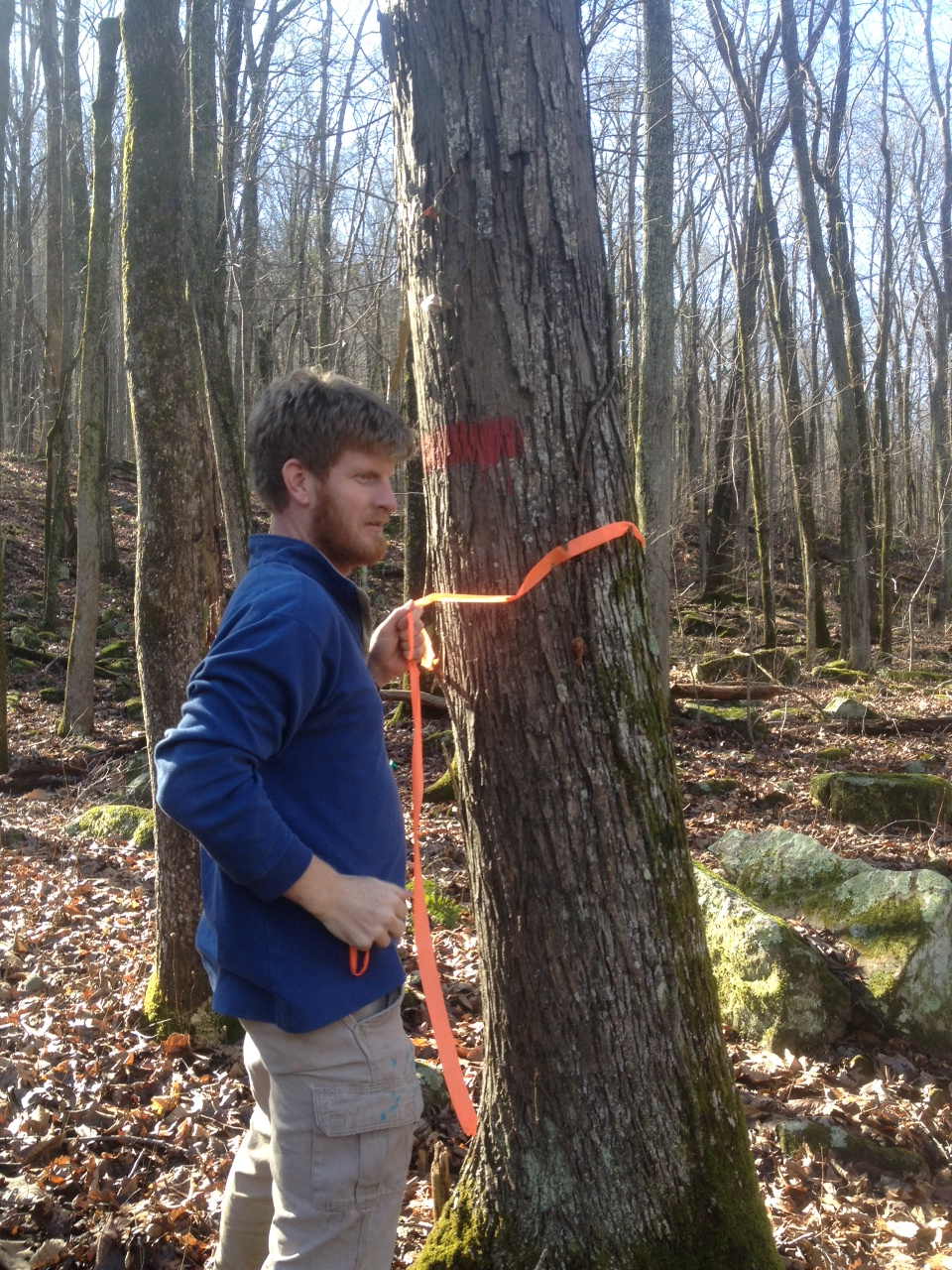“So, what do you guys do?”
That’s the question I hear most often after introducing myself as the Business & Creative Director at the Trust. It's a fair question, and to answer I’d like to give you a rundown of our duties.
LAND ACQUISITION
This is the part that people are most familiar with. We buy land – lots of land – and prevent development of the natural open space in the Tennessee River Gorge. This process starts by strategically identifying lands that fit our criteria. They must be:
- highly threatened by development,
- a connector for the lands we already own, and/or
- particularly rich in biodiversity.
If a parcel falls under one or more of these categories, we pursue it. We contact the landowner or sometimes they contact us. We try to arrive at a fair market value for both parties and then we raise the funds needed to purchase the land outright or to purchase an easement.
Every step in this process is typically drawn-out and unexpectedly difficult in some way. If you’ve ever bought a house, you understand the rigmarole of the buying process. And we’re CONSTANTLY engaged in that buying process. But having our mission in mind – the protection of the Gorge into perpetuity – makes even the most tedious of tasks worthwhile.
LAND STEWARDSHIP
Stewardship is where the water gets murky. In the next few blog posts, I’ll be fleshing out exactly what it means to be a good steward of your lands. But for now, I’ll highlight the three most fundamental parts of land stewardship that we’re tackling.
Boundary Marking
Since leaf-off in December 2013, we have had two Stewardship interns, Dave Jacobs and Charlotte Bossy, on the ground marking boundary. Their work is critical to the Trust’s future, because as Executive Director Rick Huffines says,
“Knowing your boundary lines is the first responsibility of stewardship: you can’t manage something if you don’t know where it is.”
In marking our boundaries, we’ve come across a lot of hurdles: trespass issues, unknown parcel corners, miffed adjacent landowners. Ensuring that our land remains natural, open, preserved, and protected from human destruction is one of the hardest and most controversial parts of this work. But we’re happy to do it, because our lands are worth protecting.
Long-term Monitoring and Research
If you’ve met Rick Huffines, you’ll know that he LOVES birds. He can (and will!) talk to you all day about the Woodthrush, Tufted Titmouse, and Cerulean Warbler. We’re lucky to have him at the Trust for many reasons, but his love of birds is definitely at the top of the list.
Why’s that? Birds act as an indicator species for the health of your lands. If your birds aren’t healthy, your lands aren’t healthy. (And subsequently, YOU aren’t healthy!) This year, Rick has mobilized an intense effort to gather data surrounding the birds in the Gorge. We will be launching two projects: a two-year survey of the Cerulean Warbler (pictured below) and a long-term monitoring of all migratory birds nesting in and passing through the Tennessee River Gorge. This data will help us make decisions in the future about the best ways to manage our lands to ensure that birds (and all other Gorge inhabitants) are healthy.
Facilities Management
On the 6,000 acres we own outright we have a number of buildings and facilities to maintain. This spring Rick, the interns, and Trust volunteer Larry Roberts spent many days cleaning out the Pot Point Shop. This shop serves as the meeting point for all our trail maintenance and volunteer workdays. The shop now has a new roof and is spotless, allowing us to be much more efficient in orchestrating volunteer help! In the coming months, we will be addressing some updates needed at the Pot Point and Cash Canyon Cabins.
COMMUNITY ENGAGEMENT/ EDUCATION
I want to end on what has quickly become the most important part of the Trust’s work: Community Engagement. We don’t protect land for our own use. We protect land for us. My last blog post was all about things to love about the TN River Gorge. Rick, Sarah, and I come to work everyday thinking about the ways we can connect citizens of Chattanooga with the Gorge. It’s an amazing place that can offer fun, healing, solitude, and wonder. Check out ways to explore it here.
To reach as many people as possible, we’ve partnered with some local groups on a few projects:
- If you’ve been following the Trust on Facebook, you’ve probably seen photos marking the progress on our bird-banding lab. (See the model below!) Local Architect Andrew Smith volunteered his time to design the observatory back in February. A few weekends ago, the Howard High School students that are part of Lookout Mountain Conservancy’s afterschool program helped us pour concrete footings for the lab and also cleared the connecting trail that will be used by researchers and community members. With the footings poured, the bird-banding lab is expected to be built and operational by the end of next week! Check our Facebook page for updates and keep an eye on the “Upcoming Events” portion of our website to see when you can come out and help us band birds in the Gorge!
- Rick has a favorite quote by E.O. Wilson:
The love of complexity without reductionism makes art; the love of complexity with reductionism makes science.
While the wording may seem a little lofty, the idea is a simple one: We are all conservationists. We all love nature for its art, and some love nature for its science. But every human – as a piece of nature him/herself – can appreciate the aesthetic beauty of looking out over the Gorge.
This year, we’ve partnered with Townsend Atelier, a local Chattanooga gallery, to bring plein-air artists to our annual fundraising dinner, Not JUST Another Gorgeous Evening. This event has been made over this year to focus on the good work the Trust has done and continues to do. Townsend Atelier’s artists will help the Trust capture this good work by painting the Gorge “en plein air” the night of our event.
- Finally, the Trust has been working with Velo Coffee Roasters to produce a Cerulean Warbler coffee. The Cerulean Warbler is currently the fastest declining songbird in North America. And we’re lucky enough to have them in the Tennessee River Gorge. Incidentally, Ceruleans love to winter in the shade-grown coffee plantations of the Northern Andes. The Trust worked with Velo to locate a coffee bean from the very plantations where Ceruleans winter! Your purchase of this Velo coffee will taste incredible and also protect the wintering habitat of one of America’s most vulnerable species.
In late-May, the Trust will be holding a free cupping event at Farmer’s Daughter to kick-off our two-year survey of the Cerulean Warbler within the Tennessee River Gorge. Keep an eye out for the exact date of this event.



